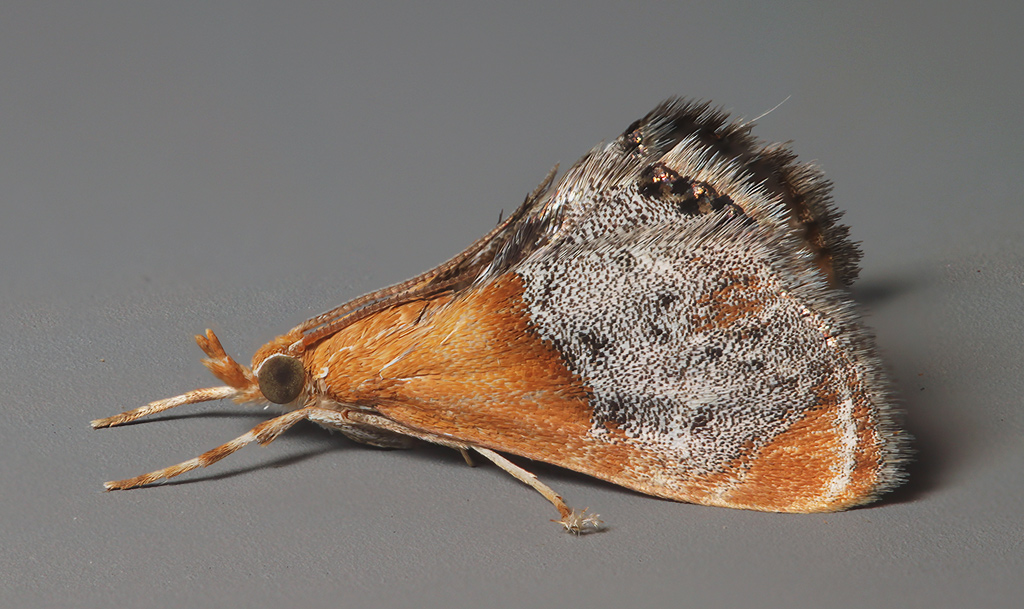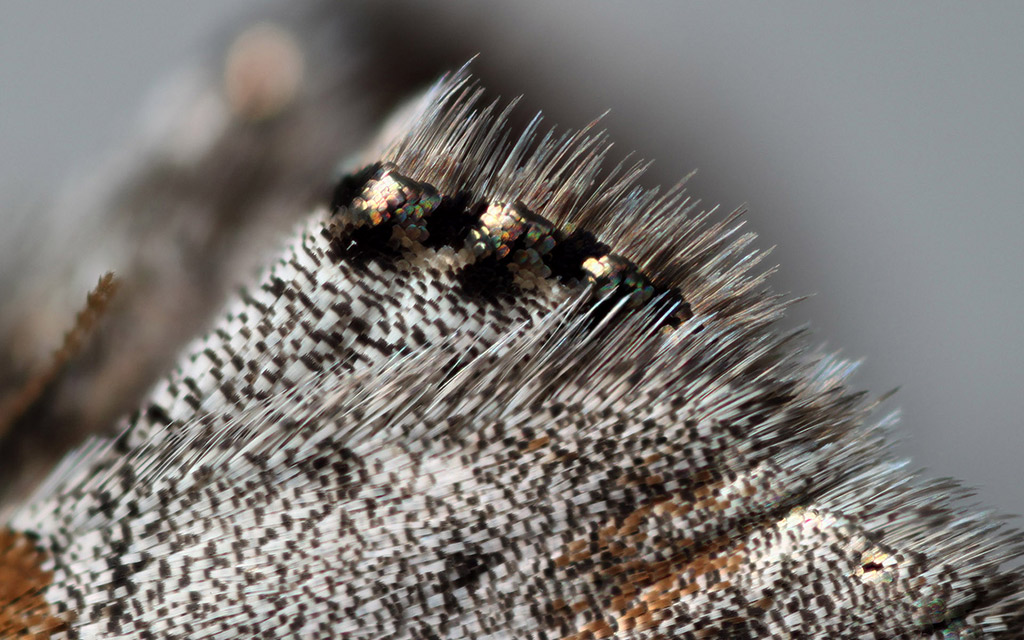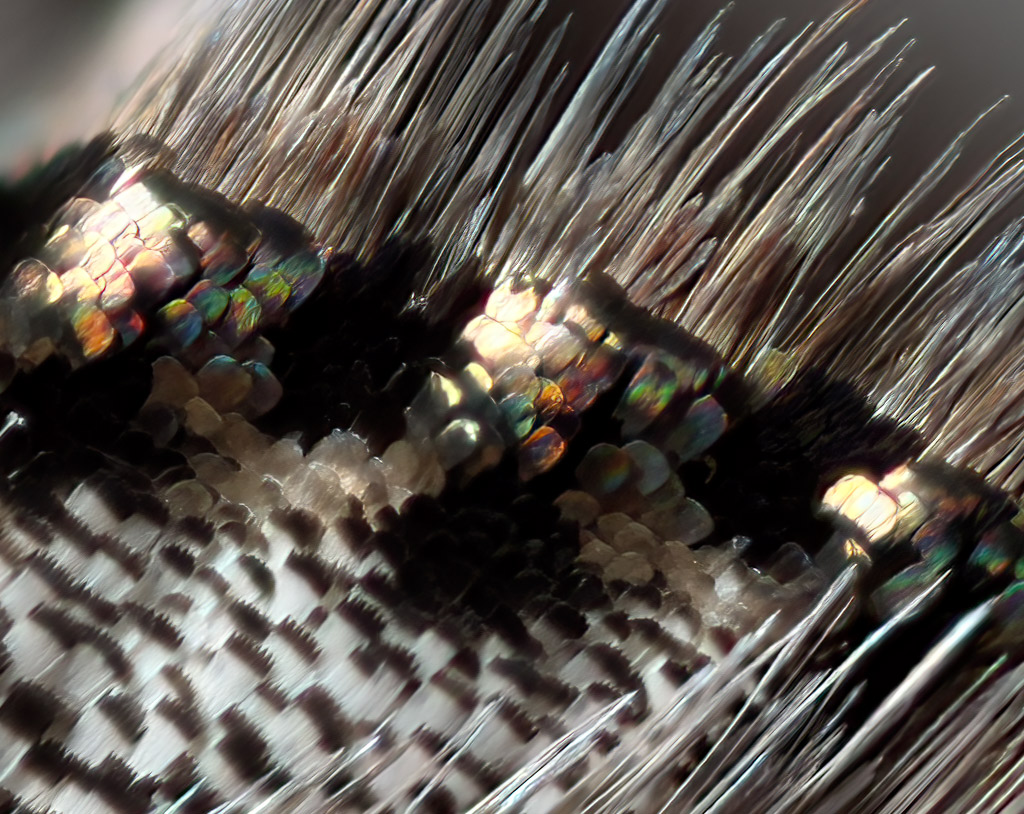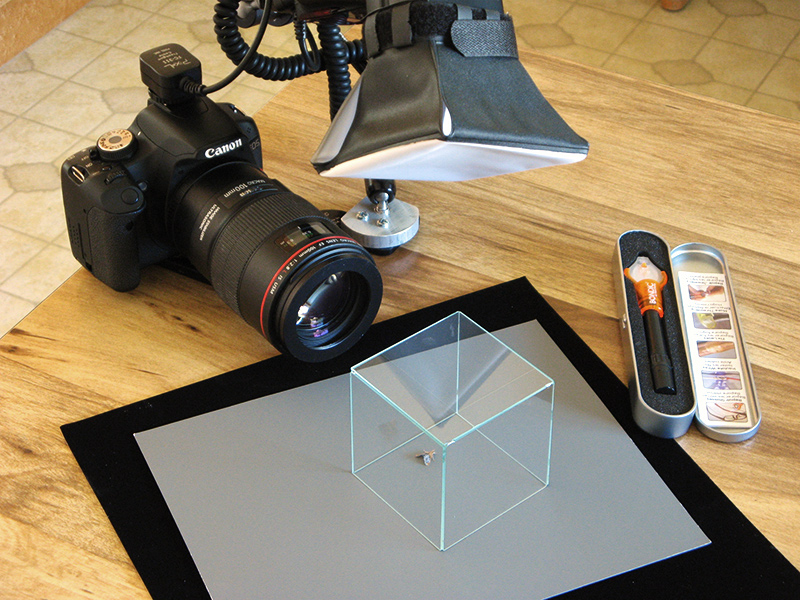
The hindwing spots are tiny but spectacular.


The backstory here is that I noticed this small moth sitting quietly on the outside glass of a window on the shaded north side of my house. It stayed there for several hours.
I did not recognize the beast, so after a while I coaxed it into a clear container where I could take a better look. Then I hauled out my copy of Moths of Western North America and started looking through the color plates.
I was not surprised when I found a nearly perfect match, with a range that matches my area.
I was very surprised, however, when I read that
The larvae were found by Phil Rau to be predaceous on grubs of papermaking wasps (Polistes, Mischocyttarus, Vespidae) in Texas and Mexico, sometimes two or more per cell of larger wasp species.
That sent me off to do more searching. BugGuide has pictures of the larvae in a paper wasp nest, indexed at the Caterpillars tab of https://bugguide.net/node/view/29598/bgimage . It turns out that the beast is so well known, it even has its own Wikipedia page, https://en.wikipedia.org/wiki/Chalcoela_iphitalis , which writes that:
By far the most likely host in my area is P. dominula, the European Paper Wasp, which is now almost the only papermaking wasp to be found.The larvae are parasitoids, feeding on the larvae of paper wasps, including species such as Polistes dominulus, P. exclamans, P. metricus, Mischocyttarus flavitarsis and P. apachus. For example, M. flavitarsis nest cells are often invaded by the larvae at night because the wasps cannot see them. The larvae migrate among the cells, consuming wasp larvae and pupae. They will then pupate, spinning their cocoons in empty cells. M. flavitarsis do not attempt to rid the nest of the parasite. Instead, they will continue as a nest or abandon and renest elsewhere.
I had no idea! It was just a small attractive moth that turned up on my window. Most other species in the same family (Crambidae) are strict vegetarians, often stem borer pests in agricultural crops.
Technical: Canon T1i camera (APS-C sensor). First image shot with EF 100mm f/2.8L Macro IS USM, f/8 at 1X, a 15-frame handheld stack shot through the glass wall of a small enclosure assembled for that purpose. Second image shot with MP-E 65, f/2.8 at 3X, a 6-frame handheld stack shot with no intervening glass. Both with electronic flash, ETTL exposure. Third image is an actual-pixels crop from the second image, sharpened by Topaz Sharpen AI with its model for Out Of Focus, Very Blurred, 50% noise reduction. I can find a couple of places where the AI sharpening introduced a bit of bogus anatomy. For example one of the fine teeth on the black-tipped light gray scales was rendered by Sharpen AI as definitely split, while in reality it is not split at all. But generally speaking Topaz gave a much more attractive result than classic unsharp masking, and the slight anatomical error is of no matter here, so I went with Sharpen AI.
Following is the enclosure that I used for the low-mag shooting. For the high mag the glass introduced too much optical aberration, so I resorted to trusting that the moth would not move for long enough to shoot the stack, and removed the enclosure. That worked OK, but I'm glad that I replaced the enclosure after shooting, because not long afterward I found the moth clinging to the side of the glass. Surely it would have flown off somewhere without the enclosure. The sides of this enclosure are 75mm square microscope slides, 1.15 mm thick, that I bought a long time ago. I cannot find a current inexpensive source for them. tedpella.com sells large slides and even #1 and #1.5 cover slips at 64 x 50mm, but they are pretty expensive.

I released the moth at its point of capture, after dark. It immediately took flight and was hovering when I left.
--Rik
